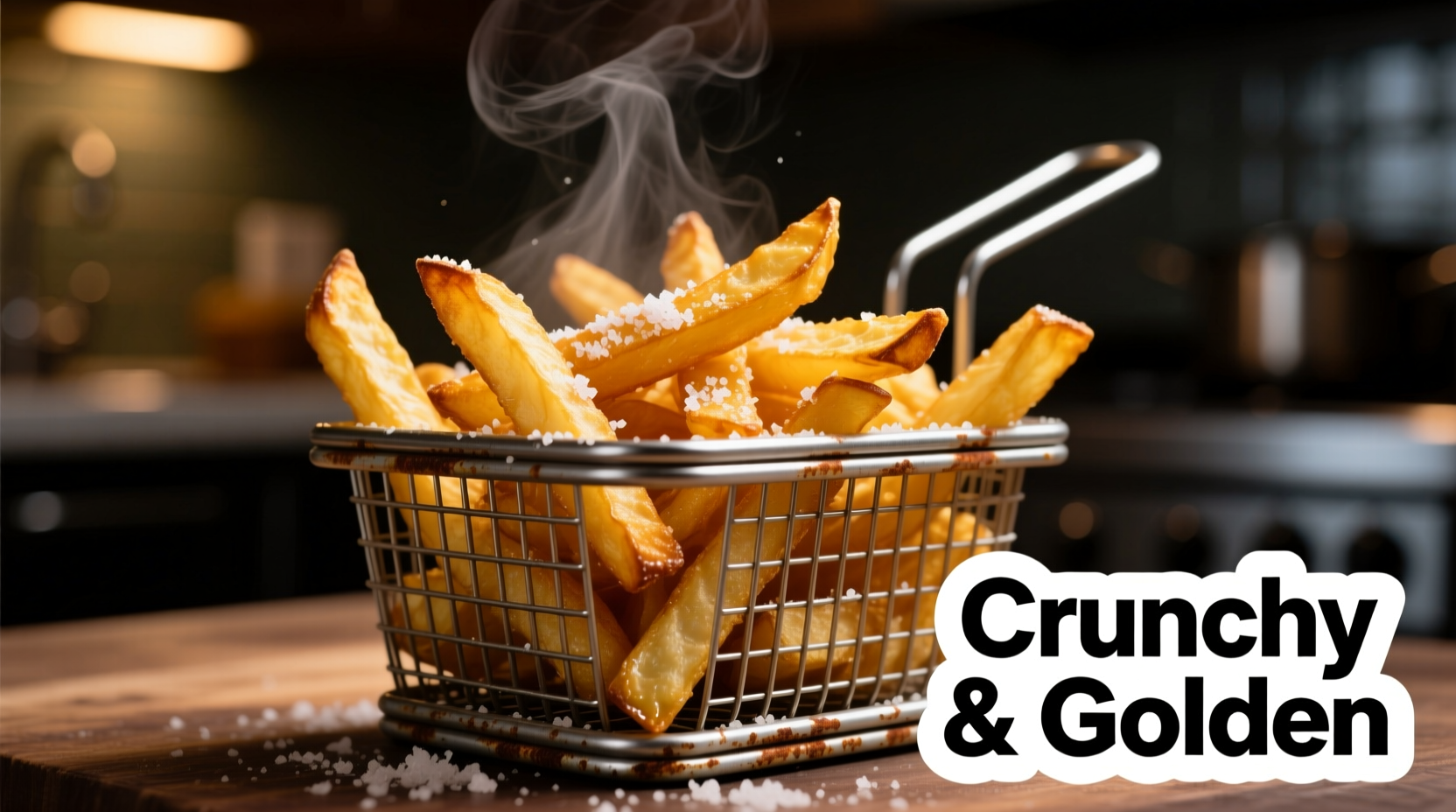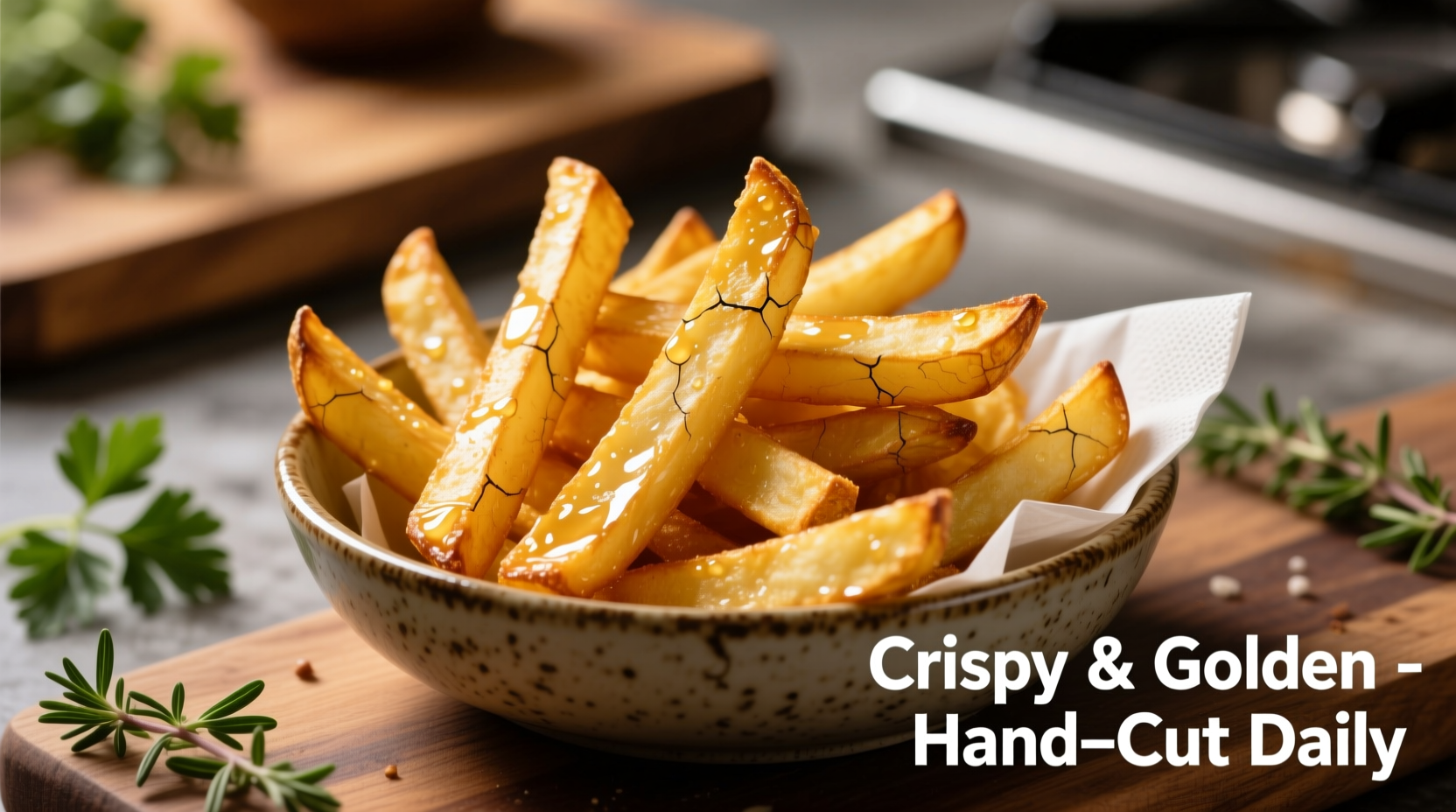Perfect deep-fried potato fries require selecting the right potato variety, precise temperature control during a double-fry process, and proper oil management. Russet or Maris Piper potatoes work best due to their high starch content, and the ideal frying temperatures are 325°F (163°C) for the first cook and 375°F (190°C) for the final crisp. This scientific approach creates fries that are golden brown, crispy outside, and fluffy inside every time.
The Science Behind Perfect Deep-Fried Potato Fries
Creating restaurant-quality deep-fried potato fries at home isn't magic—it's food science. When potatoes hit hot oil, two critical processes occur: water evaporates from the surface creating crispness, while the interior starches gelatinize to create that signature fluffy texture. According to research from the USDA Agricultural Research Service, the ideal internal temperature for properly cooked fries ranges between 200-205°F (93-96°C), ensuring complete starch gelatinization without excessive oil absorption.
Planning Your Perfect Fry: Potato Selection Matters
Not all potatoes are created equal when it comes to deep-fried fries. The starch content directly impacts your results:
| Potato Variety | Starch Content | Best For | Fry Texture Result |
|---|---|---|---|
| Russet (Idaho) | High (20-22%) | Classic French fries | Crispy exterior, fluffy interior |
| Maris Piper | High (18-20%) | British-style chips | Golden, fluffy, slightly waxy |
| Yukon Gold | Medium (15-17%) | Thinner fries, home cooking | Crisp but less fluffy |
| Red Potatoes | Low (12-14%) | Not recommended | Soggy, oil-absorbing |
As documented by the University of Minnesota Extension, high-starch potatoes like Russets contain less moisture, which means less steam production during frying and better crisping potential. This scientific understanding separates decent homemade fries from exceptional ones.
Preparation Techniques That Make the Difference
Proper preparation sets the stage for perfect deep-fried potato fries:
- Cutting consistency: Use a mandoline or French fry cutter to maintain uniform 1/4- to 1/2-inch thickness—this ensures even cooking
- Soaking process: Submerge cut potatoes in cold water for at least 30 minutes (up to 2 hours) to remove excess surface starch
- Drying is critical: Pat potatoes completely dry with clean towels—water causes oil to splatter and prevents crisping
- Temperature acclimation: Let potatoes sit at room temperature for 15 minutes before frying to prevent oil temperature shock

The Double-Fry Method: Why It Works
Professional kitchens universally use the double-fry technique for perfect deep-fried potato fries. This isn't just tradition—it's food chemistry in action:
- First fry (blanching): 325°F (163°C) for 3-5 minutes
- Gelatinizes surface starches without browning
- Creates a moisture barrier that limits oil absorption
- Partially cooks the interior while maintaining structure
- Cooling period: Drain and let rest for at least 10 minutes (up to 24 hours if properly stored)
- Allows moisture to redistribute within the potato
- Creates steam pockets that enhance crispness during second fry
- Second fry (finishing): 375°F (190°C) for 1-2 minutes
- Triggers Maillard reaction for golden color and complex flavors
- Creates the final crispy exterior while preserving fluffy interior
- Minimizes oil absorption through the established moisture barrier
Oil Selection and Management Guide
The right oil makes a significant difference in your deep-fried potato fries:
- Best oils: Peanut, canola, or sunflower oil with high smoke points (400°F/204°C+)
- Oil temperature control: Use a reliable candy thermometer—fluctuations of just 10°F can ruin results
- Fry quantity: Don't overcrowd the basket—maintain oil temperature by frying in small batches
- Oil maintenance: Strain after each use and replace after 6-8 frying sessions to prevent flavor transfer
According to the USDA Food Safety and Inspection Service, maintaining proper oil temperature prevents excessive oil absorption. When oil drops below 325°F during the first fry, potatoes absorb up to 40% more oil, creating greasy results.
Troubleshooting Common Fries Problems
Even with careful preparation, issues can arise with deep-fried potato fries. Here's how to fix them:
| Problem | Causes | Solutions |
|---|---|---|
| Soggy fries | Insufficient drying, oil temp too low, overcrowded basket | Dry thoroughly, maintain proper oil temp, fry in small batches |
| Burnt exterior, raw interior | Oil temp too high, inconsistent cutting | Lower oil temp, ensure uniform fry size |
| Greasy fries | Oil temp too low, insufficient draining | Use thermometer, drain on wire rack not paper towels |
| Uneven browning | Old oil, inconsistent fry size, moisture content | Replace oil, cut uniformly, dry properly |
Serving and Seasoning for Maximum Flavor
The final touches elevate your deep-fried potato fries:
- Immediate seasoning: Toss fries with fine sea salt within 30 seconds of frying while surface is still oily
- Flavor variations: Add garlic powder, smoked paprika, or fresh herbs after frying
- Serving temperature: Serve immediately—fries lose crispness rapidly as they cool
- Draining technique: Use a wire rack instead of paper towels to maintain crispness on all sides
Food science research from the Institute of Food Science & Technology confirms that seasoning immediately after frying allows salt crystals to adhere properly, creating that perfect balance of saltiness without excess sodium.











 浙公网安备
33010002000092号
浙公网安备
33010002000092号 浙B2-20120091-4
浙B2-20120091-4